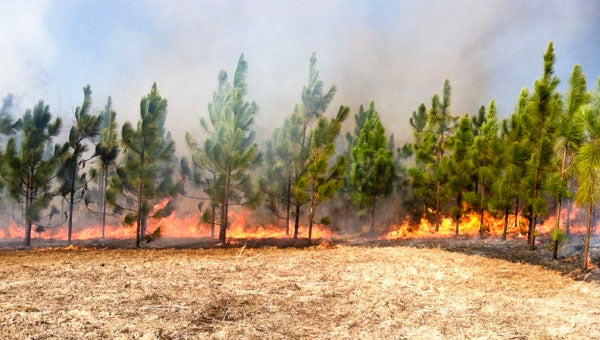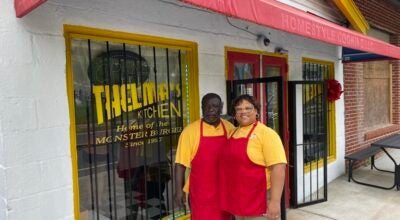Forestry Commission to hold more prescribed burns
Published 4:21 pm Wednesday, February 12, 2014

The Alabama Forestry Commission held a prescribed burn for a landowner in the Enterprise community about two weeks ago.
If the weather permits, the Alabama Forestry Commission plans to hold the next in a series of prescribed burns in Chilton County this month.
Prescribed burning is a service AFC provides for landowners that have timberland they want to burn off, Alabama Forestry Commission Chilton County Specialist Brian Smith said.
“We have a list of landowners that we do it for,” Smith said. “We’ve probably already burned close to 300 acres this year and still have a lot more to go. It’s a service that we provide, along with installing firebreaks.”
Prescribed burning is fire applied in a skillful manner under exacting conditions to a specific area for a definite forest management objective, according to information from an AFC Forest Management Sheet.
Prescribed burning provides the following benefits:
•Eliminates wildfire fuels such as leaves, branches and herbaceous vegetation.
•Controls low-quality hardwoods and shrubs that compete with pines.
•Prepares sites for tree planting.
•Increases sunlight to the forest floor, producing more grass, fruits and seeds for wildlife.
•Reduces risks of annosus root rot and brown spot disease.
•Improves visibility for harvesting and marking timber.
•Increases growth of many flowering annuals and other plants.
•Increases the presence of many fire dependent species including the gopher tortoise, indigo snake and red-cockaded woodpecker.
•Increases edge effects many species use when seeking travel routes, feeding spots or shelter.
•Improves visibility and access for forest recreation.
•Is less expensive and produces less undesirable effects than alternative methods, such as chemical treatments or mechanical clearing.
•May be used in combination with chemical or mechanical treatments to often enhance the results.
Winter is the best time of year to burn for fuel reduction, disease control, forage improvement, aesthetics and access, the sheet said.
Smith said the benefit of eliminating wildfire fuels is one of the most important aspects of prescribed burns to AFC.
“Every acre that we prescribe burn is an acre we don’t have to worry about a wildfire on,” Smith said. “It’s good to landowners because they don’t have to worry about a wildfire killing their timber. It’s good for volunteer fire departments as well because they’re the ones that get called out first.”
Smith said the date of the next prescribed burn is uncertain because the weather must be relatively dry in order for it to be effective.
“We’re hoping it will clear up sometime next week,” Smith said. “Usually, it takes a couple of days for grass to dry out … not drought conditions, but pretty dry.”
According to Smith, prime conditions for prescribed burns are for the humidity to be 20 or 30 percent, wind to be at ground level between 5–10 miles per hour, height of the smoke to be about 2,500 feet or so and for smoke to properly disperse and not hover over roadways or populated areas.
The location of the burn is unclear as well because AFC won’t conduct a burn in an area if the wind in that area would move smoke to unwanted areas.
“We don’t want our smoke to cover a major highway,” Smith said. “We have to do a plan. As long as all of the conditions fit that plan for that landowner, we will burn. Out of 15 or so weather factors, if one of them is not right, we don’t burn. Everything’s got to line up.”
The time it takes to complete a prescribed burn depends on acreage. Forty acres of land, for example, would take about three to four hours, Smith said.
“We do several in a day sometimes,” he said. “It is the cheapest management tool that we have for managing timber that produces the best results.”
AFC charges $17.50 an acre for prescribed burns and $80 an hour for firebreaks, which can help keep wildfire from entering a property or help contain it in isolated areas to aid in wildfire suppression.
Smith said AFC does not charge for visiting a landowner’s property to assess it and provide advice.
“Sometimes, we’ll visit a landowner and they’ll just want recommendations on what to do with their forest,” Smith said. “We’ll share with them that we do prescribed burns.”
For more information on prescribed burns or firebreaks, visit Forestry.alabama.gov or call AFC’s Chilton County office at (205) 755-3042.






